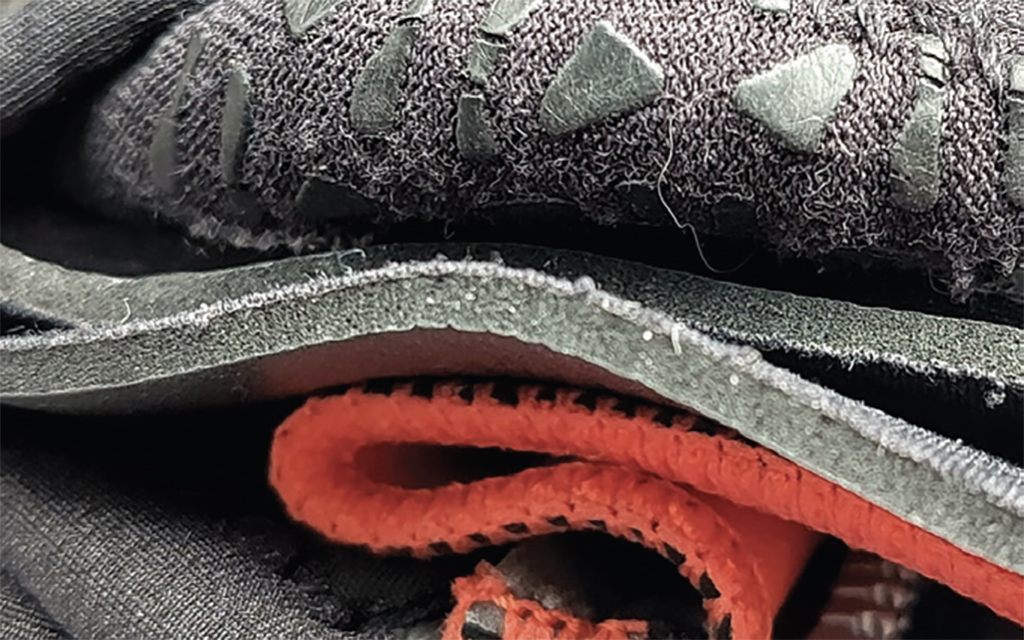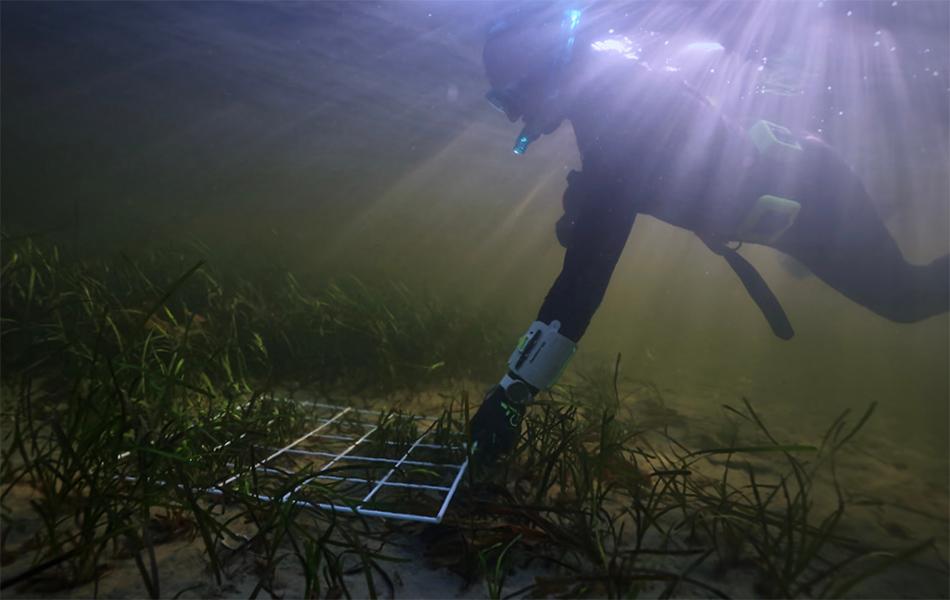
Kerry MacKay looks at the sustainability of neoprene – will we ever get a carbon-neutral wetsuit?
We’ve all used neoprene at some point. Some of us are clad head to toe in it, or maybe it’s just your hood. Either way, have you ever wondered how neoprene is made, or what the environmental impact of the production process is?
To be honest I’d not given it much consideration until I spotted ‘green neoprene’ being marketed. So, I looked into it. Here’s what I found, along with some tips to help you choose your next neoprene goodies so they don’t harm the oceans we’re spending all this money to immerse ourselves in.
I’m sure you’re familiar with typical wetsuit material, but let’s start with the basics. Neoprene is a bouncy synthetic foamed rubber, sometimes called a sponge. It is made from polychloroprene chips.
Normally it starts with oil exploration and drilling. The crude oil goes to a refinery where it is separated into different organic compounds, including butadiene. Butadiene is put through a two-step process of chlorination and subsequent dehydrochlorination to make chloroprene monomer. Manufacturers then react the chloroprene monomers together (polymerize) to make larger molecules (polymers) that make up the polychloroprene rubber chips (neoprene).
Over 380 tons of neoprene gets thrown away every year, and it doesn’t naturally degrade
The alternative conventional method uses limestone. Like oil, limestone is a limited, non-renewable resource that is mined from the earth with massive machinery. The crushed limestone is fed into a furnace and heated to extremely high temperatures. From the furnace, components are reacted with other chemicals to make products such as acetylene gas. The acetylene is reacted so two molecules join together to form a double molecule (dimerized), and then the acetylene dimer is hydrochlorinated to make the familiar polychloroprene rubber chips (neoprene).
These neoprene chips are melted and mixed together with foaming (blowing) agents and pigment, usually carbon black (from recycled tyres). Then baked in an oven to make it expand. Both of these manufacturing methods are extremely energy-intensive and consume finite resources.
Over 380 tons of neoprene gets thrown away every year, and it doesn’t naturally degrade. It will simply disintegrate over 100+ years, contributing to microplastics and chemical pollution. The adhesives used in both the lamination and the glueing processes usually contain harmful solvents, which also pollute the environment.
Clearly, the neoprene status quo is far from sustainable or good for the planet. What alternatives do we have? To state the obvious, before buying anything new see if you can repair what you have, or consider buying second-hand.
Recycling neoprene is not simple. Unlike recycling plastics, it’s not possible to melt neoprene down to make new neoprene. Some companies are upcycling pre-loved neoprene into new products such as hoods, gloves, or yoga mats and boxing bag filling. You can send your old wetsuits through many manufacturers to be recycled by Circular Flow.
More recently, ways of making ‘green’ neoprene have been developed. Yulex was the first to bring a 100% plant-based FSC-certified natural rubber to market. Sourced from naturally grown and harvested Hevea trees, the zero-waste production process emits 80% fewer carbon dioxide emissions than neoprene.
Yulex neoprene feels nearly identical to conventional neoprene. Patagonia (a well-known outdoor brand) laminates Yulex neoprene with a fabric lining of recycled polyester (often from plastic bottles) and chlorine-free wool using water-based glues. Such conscientious manufacturers have greatly reduced the environmental footprint of their neoprene products.
Synthetic rubber (neoprene in this case), emits around 182,000g to 196,000g of CO2 per kilo. By contrast, Yulex material from tree sap only emits around 7.1g to 9.6g of CO2 into the atmosphere. That’s a huge difference!
Many well-known brands (Patagonia, Fourth Element, Aqualung…) now proudly offer more sustainable neoprene products. I was unable to find a green neoprene drysuit, but there are plenty of wetsuit and hood/glove options. It’s only a matter of time before a green neoprene drysuit makes a splash on the market.
Next time you’re on the hunt for a new piece of neoprene kit, I hope you’ll repair, reuse, shop sustainably, and recycle. As Fourth Element puts it: “Why change from the tried and tested neoprene we all know? To enable future generations to keep diving, that’s why.”
Article ‘Neoprene dream… or nightmare?’ by Kerry MacKay first published in SCUBA magazine, Issue 145 May 2024.

 Author: Kerry MacKay | Posted 19 Jun 2024
Author: Kerry MacKay | Posted 19 Jun 2024



